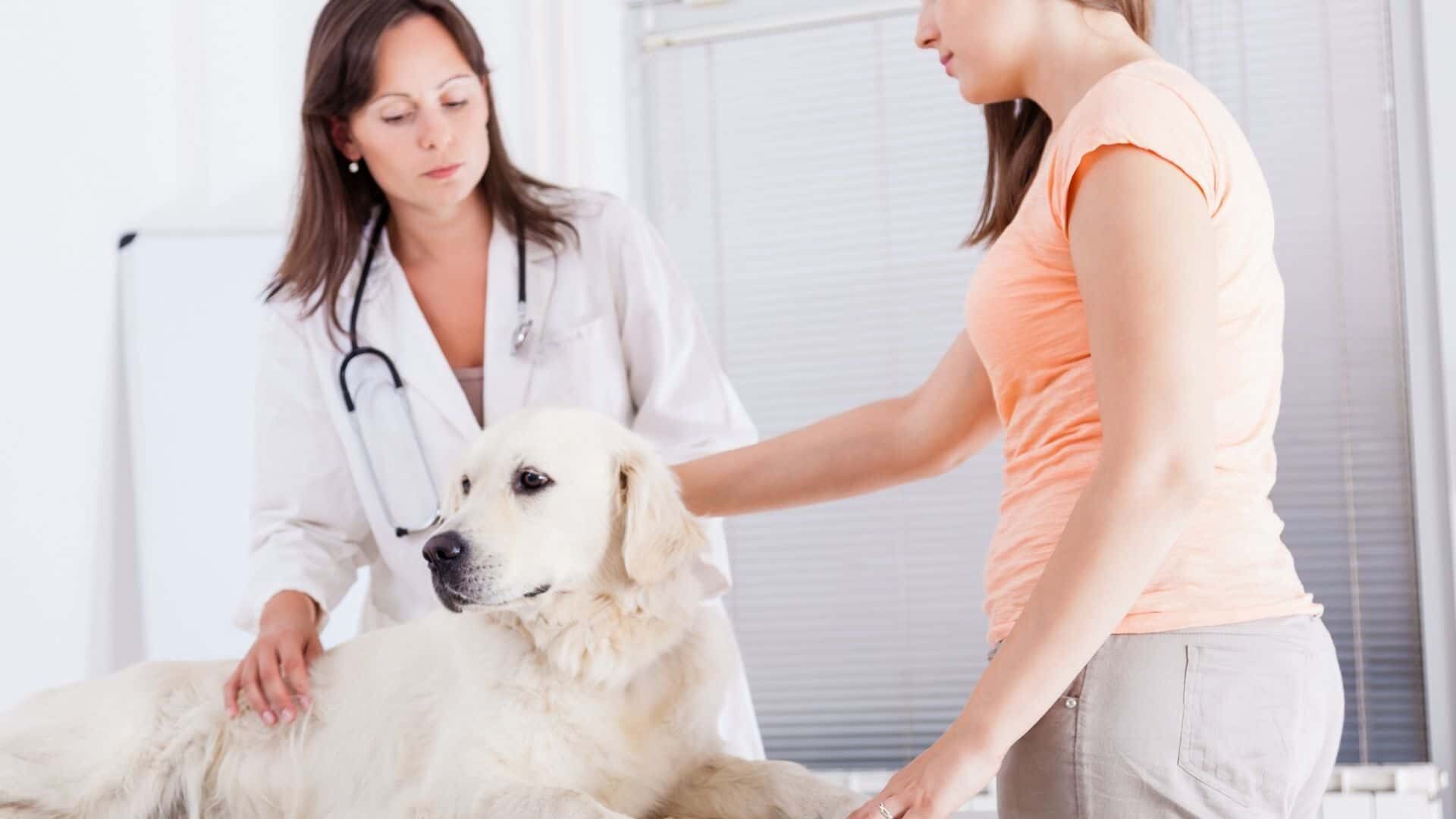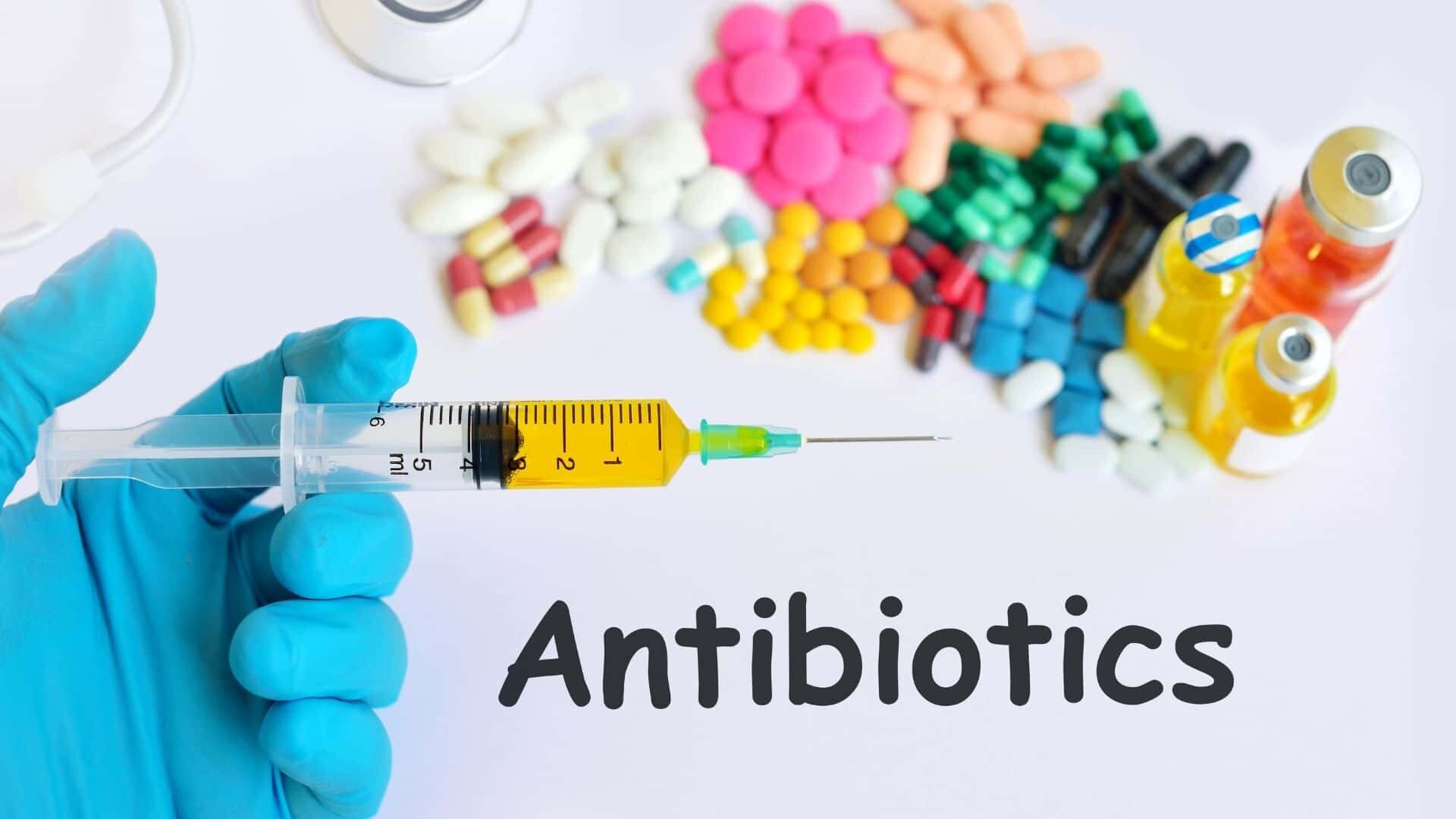Dogs and cats, like humans, can get bacterial illnesses that necessitate antibiotic therapy. To treat these diseases, antibacterial treatments are vital since they kill the sick organism while preserving your pet’s healthy cells. Antibacterial medications
Antibiotics can stop bacteria from reproducing by preventing them from forming cell walls, while others starve the bacteria, preventing the afflicted organism from converting glucose into ATP, the cellular energy source. In veterinary medicine, these are the most commonly prescribed antibiotics for the treatment of bacterial infections in pets.
Certain infections in your pet may necessitate the use of a medication to treat.
Every pet owner’s goal when their pets are sick is to get them back to health as fast and painlessly as possible. That may necessitate the use of pet antibiotics. Antibiotics for pets’ work, but how do they operate, and what dangers are there? Continue reading to learn more.
Can you give antibiotics to dogs without vet?

Systemic veterinary antibiotics for animals and fish can be purchased without a prescription in feed and pet stores, but for dogs, even if you buy them online, you will almost always require a veterinarian’s prescription. There is no way to know if the antibiotics you buy for your dog are effective or appropriate for his ailment if you buy them online without a prescription from a veterinarian.
It’s easy to assume that a single dose of penicillin can cure any and all of your pet’s ailments. According to researchers at the University of Minnesota, an antibiotic would be improper for treating a staph infection, for example. Staphylococcus aureus produces beta-lactamase; which Merriam-dictionary Webster’s defines as an enzyme that hydrolyzes penicillin to prevent its efficient activity.
You must be able to identify the sort of bacteria that is causing your dog’s illness in order to select an appropriate antibiotic. Antibiotics are required for a specified period of time for each type of bacterial illness. If an infection requires seven weeks of antibiotic treatment, treating it for less time or with the wrong sort of antibiotic might have major consequences for your pet’s health.
Diarrhea and vomiting are common side effects of antibiotics. Your dog’s health could suffer as a result of dehydration, which would be a hassle for you to clean up.
What are the commonly used dog antibiotics?
The following are the most commonly recommended antibiotics for dogs:
1. Amoxicillin
Skin infections, respiratory infections, gastrointestinal infections, and genitourinary infections can all be treated with Amoxicillin/Clavulanate. This antibiotic combination is similar to Penicillin and is used to treat a wide range of illnesses.
2. Gentamicin
Infections in the eye, ear, and respiratory tract can be treated with Gentamicin. In addition to reducing redness and swelling, this medication is also administered with an anti-inflammatory agent.
3. Chloramphenicol
It is safe for your dog’s body to totally pass through Chloramphenicol, an antibiotic with a pH level low enough to allow it to do so. To treat bacterial infections in the organs, this is an excellent option.
4. Sulfamethoxole
Treatment of urinary tract infections in dogs with sulfamethoxole is a common usage of this drug. As a result, dogs taking this antibiotic may experience unpleasant side effects such as vomiting, diarrhoea, and weight loss. Sulfamethoxole might dehydrate your dog, so make sure she gets lots of water while she’s on it.
5. Clavamox
In the treatment of wounds, urinary tract infections, and some respiratory infections, Clavamox (amoxicillin-clavulanic acid) is the most commonly prescribed antibiotic.
6. Flagyl (metronidazole)
Flagyl (metronidazole) is a drug used to treat gastrointestinal infections and anaerobic infections, as well as a number of intestinal parasites.
7. Cleocin
Infections of the teeth and bones are commonly treated with Cleocin (clindamycin).
8. Tetracycline
Infections caused by bacteria can be treated with Tetracycline because it inhibits the synthesis of proteins. In cases where another antibiotic has failed, tetracycline is utilised because it is able to penetrate the bacteria’s defence mechanisms.
Antibiotics for animals: what are they and how do they work?
When your dog or cat gets an infection caused by bacteria, such as an ear infection, urinary tract infection, or skin infection, a veterinarian may prescribe antibiotics. As a preventative measure, they can be used after a big wound or after abdominal surgery to keep infections at bay. However, hold off on heading to the nearest pharmacy just yet. Antibiotics have little effect on viruses, just as they do on humans.
It’s critical to determine if the infection is caused by bacteria before deciding whether or not to administer antibiotics, says Dr. Georgina Ushi Phillips of West Chapel Animal Hospital in Florida.
Dr. Phillips adds that while it may seem obvious, upper respiratory infections may have both bacterial and viral components—and in many cases, both. Antibiotics are unnecessary if the infection is solely viral, and they may actually contribute to the development of antibiotic resistance in some bacteria.
Because antibiotics don’t treat specific ailments but rather different kinds of bacteria, the next step is to discover which sort of antibiotic will work best for your pet.
Michelle Burch, DVM, a veterinarian based in Decatur, Alabama, recommends either culturing or utilising the right first-line treatment to ensure that veterinarians are good stewards of antibiotics and prevent resistance.
As Dr. Burch explains, “Culturing an infected area will help determine the particular species of bacteria present, which in turn will help determine the proper antibiotic.” A bacteria’s resistance to a particular medicine or its low susceptibility to that medication can be determined by culture.
Antibiotics: are they Natural or Commercial?
Ear infections and urinary tract infections (UTIs) are among the most prevalent ailments in dogs. Flea bites and allergies can cause skin irritations and allergies in dogs. There are a number of antibiotic-resistant diseases that necessitate that pet owners look into a variety of treatment options.
Clove oil, a well-known anti-infective component, is used in natural antibiotics. Allergy reactions can be reduced in many circumstances. Natural antibiotics can be obtained without a prescription from a veterinarian, despite the fact that prescriptions for many commercial antibiotics are required.
Antibiotics for Your Dog’s Health
Antibiotics are available in a variety of forms, including drops and ointment, despite the common misconception that they are only accessible in pill form. Depending on the type of infection and how quickly you can provide the drug, you should select a certain antibiotic. Dogs who are resistant to tablets may benefit from drops added to their chow.
Can pet take antibiotics prescribed for humans?

As long as antibiotics can be used to fight bacteria, Dr. Phillips advises against giving medications prescribed to humans. Antibiotics may be more effective in some animals than others, and the dosages may also vary. Interspecies variation is possible when it comes to side effects.
Dogs and cats have different metabolisms than humans, thus some medicines prescribed to humans may be hazardous to pets because of this. Using the correct antibiotics on animals necessitates veterinarian supervision.
“Amoxicillin-clavulanic acid is a regularly used antibiotic in both pets and people under a variety of brand names,” Dr. Phillips explained. The amoxicillin-to-clavulanic acid ratio, on the other hand, differs dramatically between medicines meant for people and pets. Antibiotic efficacy can be greatly affected by such subtle variations.”
Vets can prescribe antibiotics for dogs and cats if you fear they’re suffering from an infection. This is the safest option for keeping your pet healthy and happy. A human pharmacy may be called upon in some situations by your veterinarian to supply you with medication. Some conditions necessitate the use of a veterinarian-prescribed medication.
What are the bacterial infections in cats and dogs?
Infections caused by a variety of germs can occur in cats and dogs. Among them are:
Dermatological infections such as pyodermas, which are usually caused by Staphylococcus germs, are commonly seen. Pupils (inflamed swellings of the skin filled with pus), ulcers, and bald patches are some of the symptoms.
Infections of the urinary tract, including cystitis. Staphylococcus and Proteus bacteria are the most common causes of urethral obstruction, which results in blood in the urine, abnormal or frequent urination in inappropriate locations, and a blocked urethra (the tube leading from the bladder).
The bacteria Bordetellabronchiseptica and Streptococcus zooepidemicus, as well as others; fungal or viral infection are the most common causes of pneumonia. Swelling and pain in the lungs are common side effects of the illness, which promotes lung tissue inflammation.
Infections affecting the nose, throat, and sinuses are all examples of upper respiratory tract infections. The bacteria Bordetellabronchiseptica causes kennel cough, which is a frequent ailment in dogs. Other bacteria, such as Streptococcus, can cause symptoms such as a runny nose, a sore throat, and a rash.
One of the most common reasons that people get enteritis is due to an infection with one of the many bacteria that can infect the small intestine. Vomiting, diarrhoea, dehydration, and a fever are all signs of an infection with E. coli.
Is it safe to use Topical Antibiotics on Dogs?

Putting a small amount of antibiotic ointment on your pet’s wound may seem like a good idea at first. Neosporin’s two major components, bacitracin and polymyxin B, have been licenced for use in pets, as have other topical antibiotics.
In dogs, the third ingredient, neomycin, has been linked to a decrease in hearing ability. According to the American Kennel Club, the lubricant used to give the drugs can also cause gastric problems if your pup happens to reach the site and lick it off.
According to the University of Connecticut School of Pharmacy, zinc-based topical antibiotics are also hazardous to your dog. The antibiotic bacitracin zinc, or other zinc products such as diaper-rash creams, should be avoided by dog owners.
What can amoxicillin be used for?
An amoxicillin-resistant bacterium infection can be determined by your dog’s veterinarian. To name just a few examples,
Asthma and other respiratory illnesses Amoxicillin is frequently prescribed for pets with upper respiratory infections. Your pet will struggle to breathe if these infections go untreated.
Infections of the urinary system UTIs are painful and can escalate to kidney infections, so it’s best to avoid them. Early treatment with amoxicillin can help prevent the spread of the infection.
A skin infection caused by a bacterium It’s possible for your pet to become infected if it gets a wound or breaks its skin in any way. Taking antibiotics can help keep the infection from worsening or spreading to other parts of the body, which can be quite harmful.
Infections of the gastrointestinal tract Painful and difficult to digest, a GI infection can make it difficult for cats to eat healthily. Probiotics may also be prescribed by your veterinarian to help your pet’s GI tract repopulate with healthy microorganisms.
Abcesses on the teeth Chewing dry food can be excruciatingly painful if you have an abscessed tooth infection. A brain or blood infection might develop if left untreated.
Acute otitis media Antibiotics such as amoxicillin for animals can also treat ear infections. This can be done before hearing or the ear’s structures are threatened or damaged.
Watch Natural antibiotics for dog home remedy (the 3 best and how to use them) | Video
I don’t want to take my dog to the vet just to acquire antibiotics, what should I do?
Antibiotics that do not require a prescription can be purchased over the counter.
Amoxicillin is available at pet stores?
Many pet stores, as well as internet pet businesses, provide antibiotics that are safe for dogs to use.
What is the cost of antibiotics for a canine?
If you have a dog, there are a variety of antibiotics that range in price from $7 to $10.
What are the safest antibiotics for dogs?
Antibiotics commonly used by humans, such as doxycycline, amoxicillin, azithromycin, and ampicillin, are safe for dogs, as are many natural antibiotics.
How long does antibiotics take to work in dogs?
As soon as a few hours, usually within the first 24 hours, dogs begin to feel better.
Summary

Before giving your pet antibiotics, talk to a vet who is familiar with your pet’s medical history to be sure there are no adverse effects and that the antibiotics won’t interact with anything else your pet is taking.
A prescription can be picked up at most pet stores and pharmacies; just make sure they don’t deviate from the original prescription without consulting with your veterinarian beforehand. It’s possible to save money by using a SingleCare coupon at a human pharmacy! Low appetite, vomiting, and diarrhoea are all possible adverse effects of some drugs. The sooner you get in touch with your veterinarian, the better.





